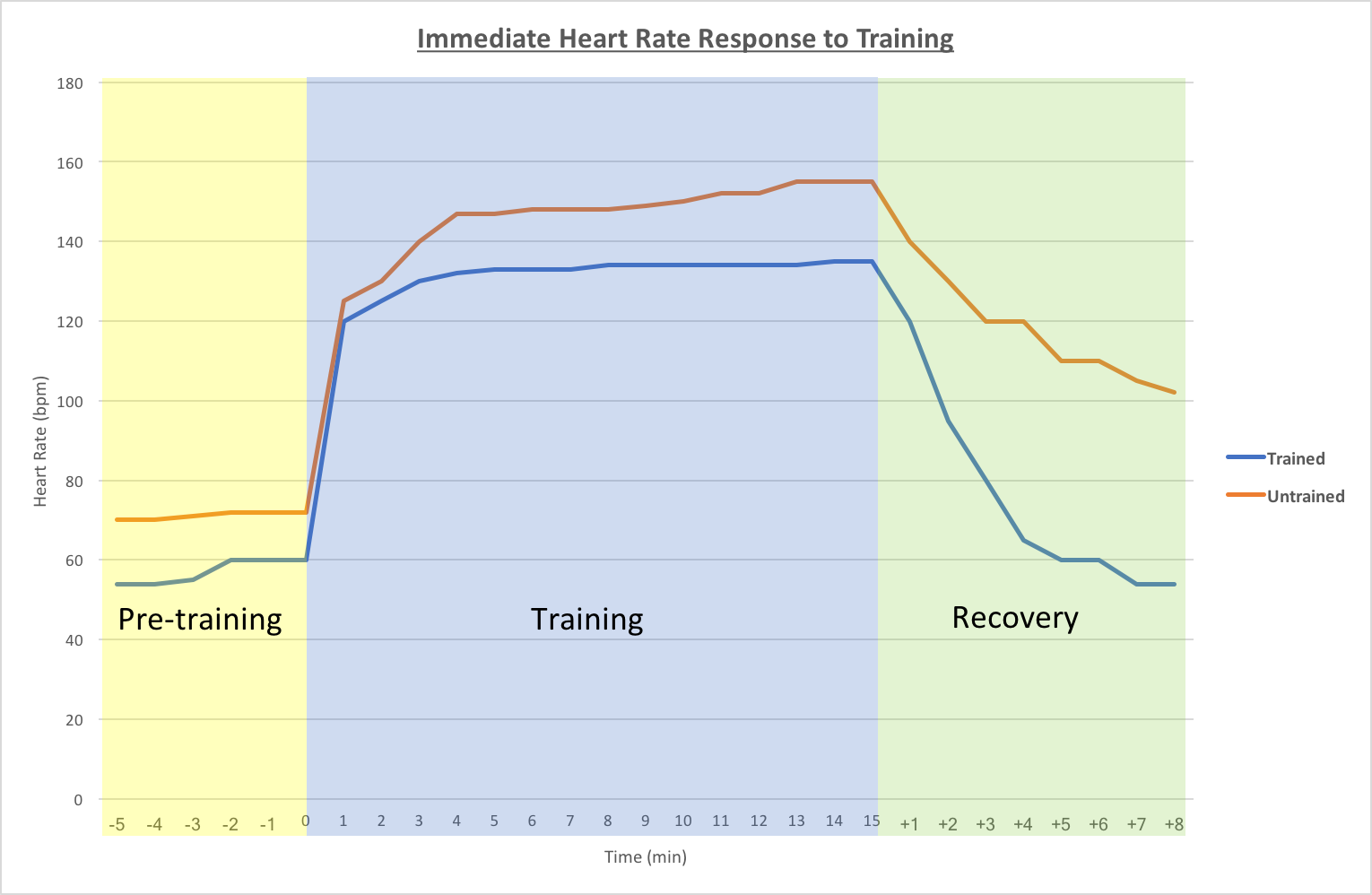The first dash point for the immediate physiological responses to training is heart rate. Heart rate is the number of times your heart beats in a minute. Heart rate responds to training by increasing from the resting value and is often used to set or determine the intensity of the training session. For example, an athlete might train for 20 minutes at 80% maximal heart rate (MHR).
Before the body even begins to move, a trained athlete’s body will begin to response to the familiar visual stimulus, by increasing the heart rate. Heart rate then increases in response to exercise because the body detects an increase in carbon dioxide in the blood. This increase in carbon dioxide indicates that the body requires more oxygen, which results in your body increasing its heart rate. The increase in heart rate relates directly to the amount of carbon dioxide being produced. Higher intensity training naturally produces more carbon dioxide and therefore causes a greater increase in heart rate. For example, an athlete will have a higher heart rate running at 16 km/h on a flat terrain than they will running at 10 km/h on the same terrain.

The heart rate (HR) can be seen to increase just prior to training in the trained athlete, and then increases quickly to around 120bpm. After this, the body responds to the carbon dioxide levels in the blood to increase the HR as required, with the trained athlete having a lower HR than the untrained athlete. Once training is finished the trained athlete’s HR will return to normal levels faster than the trained athlete.
The body can take 1 to 3 minutes to complete this change in heart rate so that the new heart rate is moving blood around fast enough to deliver the oxygen and remove the carbon dioxide at the rate required. This is because the body is constantly checking the gas levels in the blood and making further adjustments to the heart rate. If a new intensity occurs, the body will adjust the heart rate again according to the intensity. For example, if our athlete is doing hill runs, their heart rate might be at 174 beats per minute (bpm). If we then change the activity to jogging around a football field, their heart rate will drop, possibly to 130 bpm, but this could take 1 to 3 minutes to occur.
After the training session, the heart rate returns to normal as the body is no longer producing carbon dioxide at the higher rate, causing the body to reduce the heart rate.

